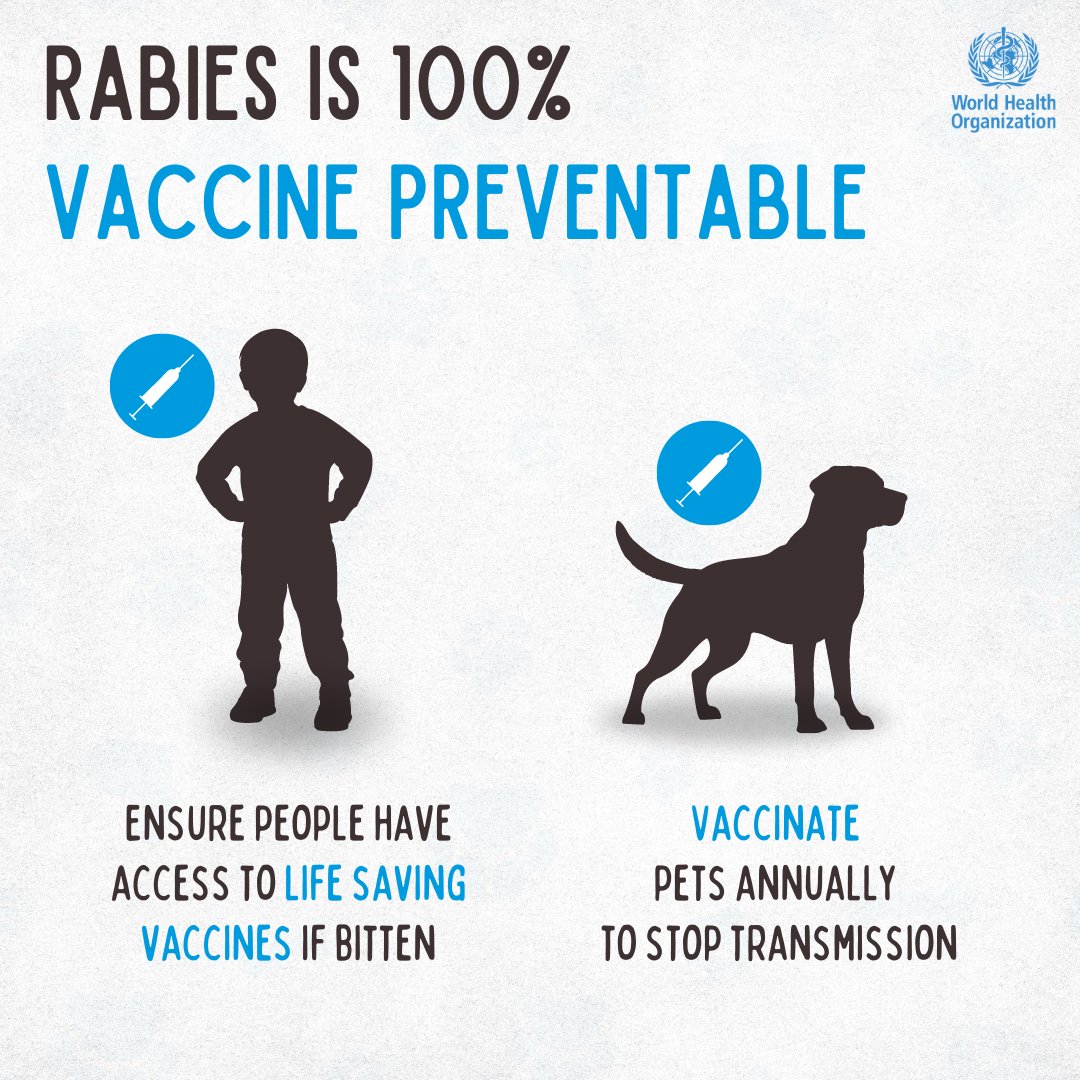

Rabies remains one of the world’s deadliest yet most neglected diseases, taking a human life every nine minutes, despite the fact that it is entirely preventable through timely vaccination. The World Health Organization (WHO) has once again sounded the alarm, urging people across the globe to take preventive measures seriously by vaccinating their dogs annually and ensuring that those bitten by potentially infected animals receive immediate access to life-saving vaccines. The heartbreaking truth is that thousands of people—especially in Africa and Asia—continue to die from rabies each year because of ignorance, negligence, and limited access to essential health services.
The disease, which is caused by a virus transmitted through the saliva of infected animals, most commonly dogs, has plagued human communities for centuries. It is almost always fatal once symptoms appear, leading to a horrifying death characterized by fever, agitation, paralysis, hallucinations, and hydrophobia—the infamous fear of water that defines advanced rabies. Yet, unlike many other deadly illnesses, rabies is entirely preventable. A simple vaccine administered to dogs and a series of post-exposure shots given to humans after a bite can eliminate any chance of death. Despite this, the world continues to lose tens of thousands of people annually, many of them children.
The WHO, alongside global health partners, has stressed that vaccination campaigns for dogs are the single most effective way to end rabies deaths in humans, as domestic dogs are responsible for up to 99% of rabies transmissions to people. But vaccination rates remain far too low in regions where rabies is most prevalent. In rural villages where veterinary services are scarce and healthcare facilities are miles away, people often fail to take their pets for annual shots. As a result, the cycle of infection continues unchecked, spreading silently from one community to another.
The tragedy of rabies deaths is compounded by the fact that they are most common among the most vulnerable: children in poor, rural areas. According to WHO data, 40% of rabies victims are children under the age of 15. They are more likely to play with dogs and less likely to understand the danger of a bite or scratch, leaving them exposed to the deadly virus. Parents, often unaware of the seriousness of rabies, may not seek medical help in time, while some communities rely on traditional healers and herbal remedies that offer no protection against the virus. By the time the truth becomes clear, it is too late—symptoms have appeared, and death is inevitable.
Public health experts emphasize that access to post-exposure prophylaxis (PEP), the life-saving vaccine given after a bite, is critical to ending rabies deaths. PEP is highly effective if administered promptly, usually through a series of shots given over a few weeks. However, in many countries, the vaccine is either unavailable or too expensive for average families to afford. This has led to countless preventable tragedies, where children and adults die simply because they could not get a vaccine that costs less than a few cups of coffee in wealthier nations.
The call to action from WHO is clear: rabies can and must be eradicated. The organization has set a global target—“Zero by 30”—an ambitious campaign aiming to eliminate human deaths from dog-mediated rabies by the year 2030. Achieving this goal will require a combination of dog vaccination drives, improved access to human vaccines, and massive public awareness campaigns to educate people about the dangers of rabies and the urgent need for vaccination after a bite. Governments, non-profits, and international organizations must work together to ensure that vaccines are affordable and available, even in the most remote areas.
Yet, the fight against rabies is not just a medical challenge; it is also a social one. Misinformation, cultural beliefs, and lack of education often stand in the way of effective prevention. In some places, myths abound that rabies can be cured with herbal concoctions or that bites from puppies are harmless. Others may delay seeking care because of stigma or lack of awareness. Changing these perceptions is just as important as providing vaccines. Communities need to be taught that every dog bite is a potential emergency and that immediate medical attention is the only way to survive.
Beyond human safety, vaccinating dogs is also an act of compassion toward animals. Rabies is a cruel disease that causes immense suffering for infected dogs, often leading to their abandonment or inhumane killing out of fear. Annual vaccination not only protects humans but also ensures the wellbeing of beloved pets and stray animals, breaking the chain of transmission once and for all. It is a simple act of responsibility that can save countless lives, both human and animal.
The numbers are staggering but also motivating. If one person dies from rabies every nine minutes, that means about 160 lives are lost every single day. In the time it takes to read this article, another family somewhere in the world may have lost a loved one to a disease that should no longer exist. It is a global injustice that must be corrected. No one should die from rabies in the 21st century, not when the solution is simple, affordable, and already within our reach.
Experts believe that with proper political commitment, funding, and education, rabies could go the way of smallpox—a disease wiped off the map through coordinated international effort. But the clock is ticking, and every minute wasted is another life lost. That is why organizations like WHO are pushing for stronger partnerships between governments, NGOs, and communities to ramp up dog vaccination programs, subsidize human vaccines, and spread awareness. The slogan “Rabies: Zero by 30” is not just a dream; it is a necessity.
The responsibility, however, does not lie with governments alone. Individuals also have a critical role to play. Pet owners must take vaccination seriously, ensuring their dogs are immunized every year without fail. Communities must report and support mass vaccination campaigns, while individuals bitten by dogs or other potentially infected animals must seek medical care immediately instead of relying on unproven alternatives. Schools and community centers can also play a role by teaching children about the risks of rabies and the importance of telling an adult immediately if they are bitten or scratched.
The fight against rabies is winnable, but only if action replaces apathy. The silent killer continues to claim lives every nine minutes, a haunting reminder of global neglect. Yet, in that same span of time, countless dogs could be vaccinated, countless children could be educated, and countless deaths could be prevented. The choice is ours: to allow rabies to remain a scourge in the shadows, or to rise as a united world and finally consign it to history. The solution is clear, the tools are available, and the time for action is now.


